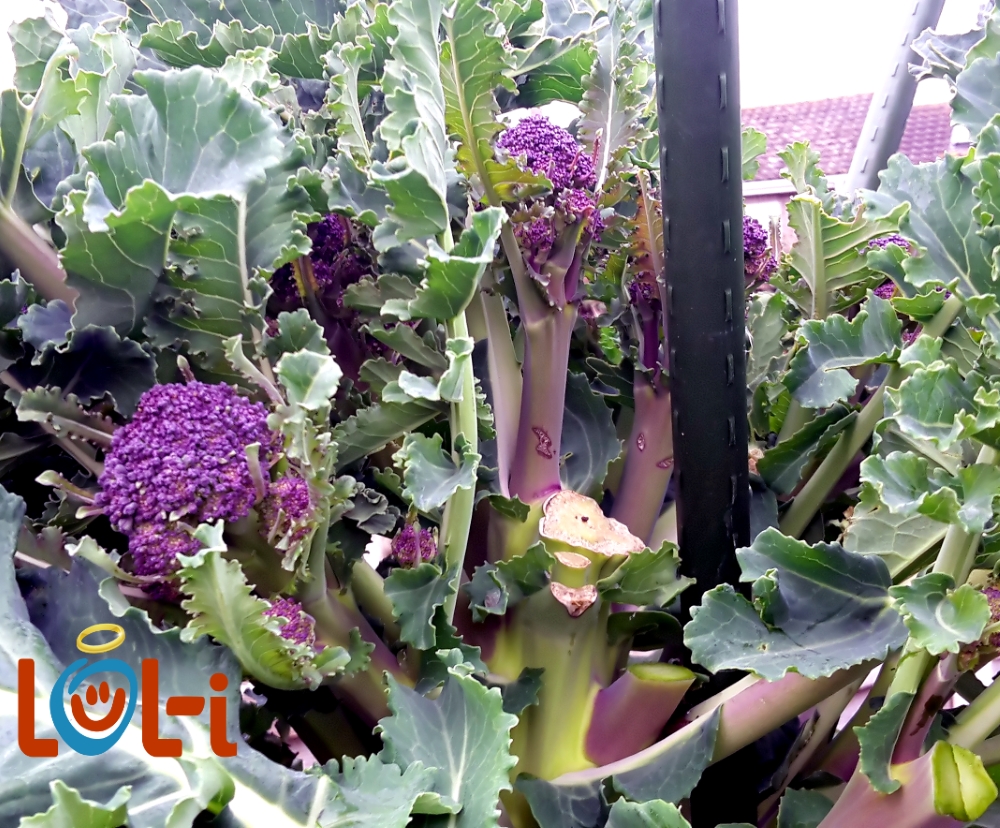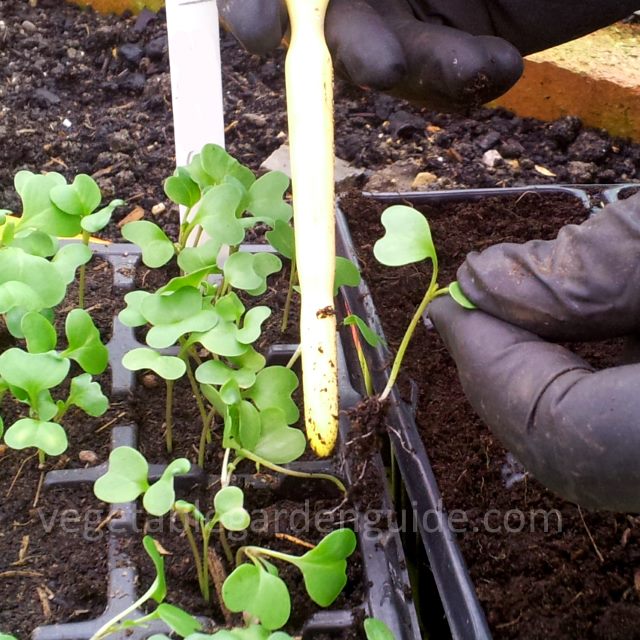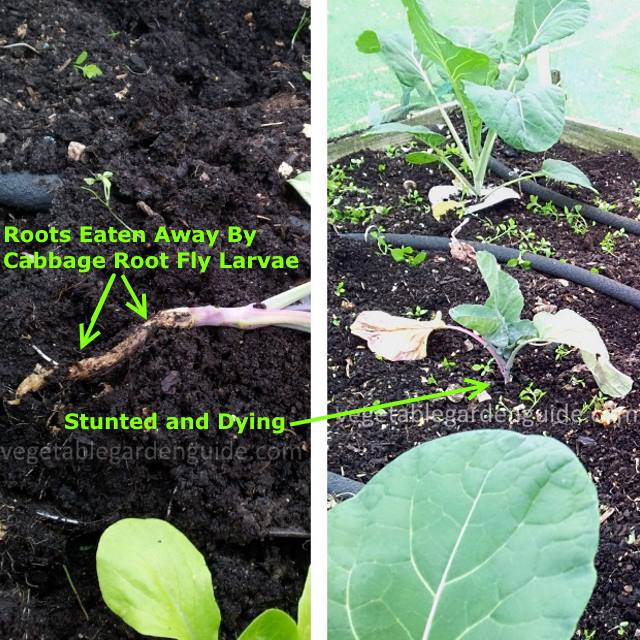Growing Broccoli Plants - Benefit From
This Nutrient Packed Vegetable
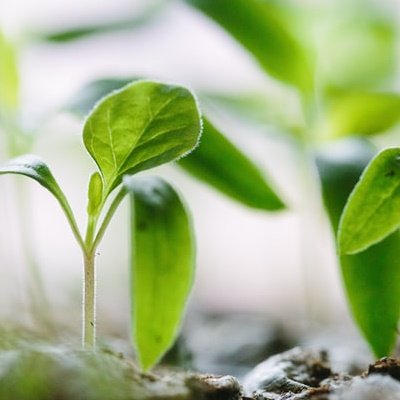
Growing Broccoli is easy and rewarding and because it has proven health benefits learning how to grow Broccoli is well worth the effort.
The green frozen heads you find in shops are really called calabrese and not strictly Broccoli.
The name Broccoli is generally reserved for sprouting varieties which when cut will sprout again (the seed catalogues don't help the confusion much either)....but boy are they delicious.
Growing Broccoli? - then sow in the spring, transplant in the summer and harvest during the following spring, a welcome gap filler for that time of year.
Growing Broccoli - Soil Details
An important part of growing Broccoli is understanding your soils make-up. Ideally Purple Sprouting Broccoli likes a firm, rich, heavy soil (but not clay) as these tend to be higher in nutrients.
Broccoli plants are going to be in the ground for approximately 38-42 weeks so the ground should not be waterlogged in winter.
Pick an area that is sunny or partially shaded and fork in some well rotted compost during the the autumn/fall. This need not be done every year just make sure your soil is kept in good heart as part of your ongoing care.
About 2 weeks before sowing apply a general fertiliser, tread down - not too heavily though - then lightly rake over the surface.
Your soils pH is a measure of its alkalinity or acidity and different plants thrive at different pH levels. In reality though most plants cope well across a range of readings.
You can measure your soils pH with a testing kit bought from a garden centre or plant nursery. Growing Broccoli in a soil with a pH range of 6.2 to 7.2 (7 is best) will be just fine.
Adding lime will increase your pH reading... making your soil more alkaline. Attempting to make your soil more acidic - a lower pH reading - is more difficult.
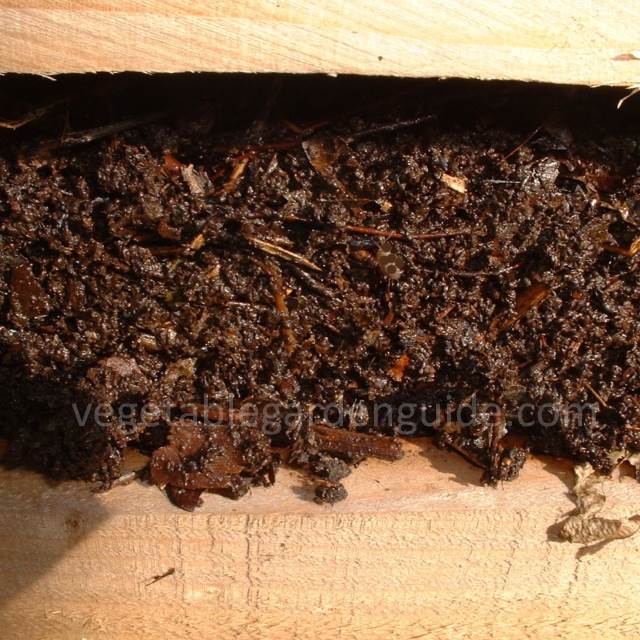
Growing Broccoli - Sowing and Planting
As you can see these steps on how to grow Broccoli are easy and do-able for your home garden.
Different Broccoli varieties may have differing sowing times so all you need to do is read the seed packet...carefully - and you won't go wrong. But as a general 'rule of thumb' both white and Purple Sprouting Broccoli plants are sown in April/May time and transplanted June/July.
Let's go deeper - don't worry we are not going too deep... just up to your ankles.
Growing Broccoli - Making a Seed Bed
In early spring rake over and level the area you have chosen as a seed bed - frosts will have done a lot of the work for you by then... hopefully. If you only require a few plants then this need not be too big an area.
Cover the bed with sifted mature compost - the bed may be small enough to purchase a bag or two from your garden centre, especially if you're just getting growing Broccoli, you might not have the organic matter to compost.
Tread over this to make it firm... but only when the soil is dry enough i.e. not sticking to your boots. Then give it a light raking over.
Mark out the rows using string stretched between two stakes for a straight line and make shallow drills along the length of the string with a trowel 13mm(1/2") deep and rows 15cm(6") apart.
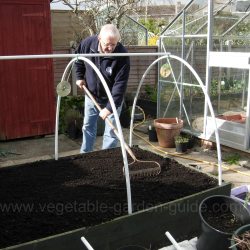 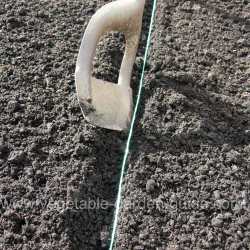 |
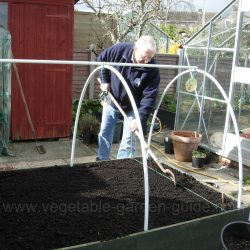 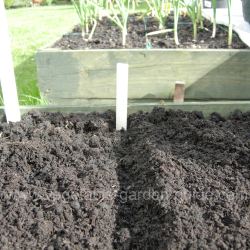 |
Sow your Broccoli seed thinly into the drills and cover them over with soil, lightly firming with the head of the rake. Mark both ends of the row, labelling one end with the variety and date of sowing. Keep the seed bed moist, always use a fine spray.
When the growing Broccoli plants are about 2.5cm(1") tall, thin the seedlings to about 7.5cm(3") apart in the rows. This is to stop overcrowding thus causing the seedlings to become weak and spindly.
The seedlings are ready to plant out when they are about 10cm(4") to 15cm(6") tall. Water the bed the previous day before removing the Broccoli seedlings to their permanent position.
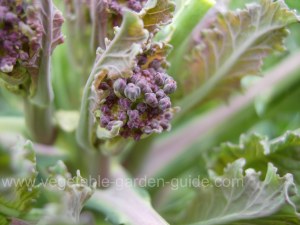
When your learning how to grow Broccoli there is no need to remember which varieties to grow. Part of the enjoyment of growing Broccoli and indeed, all vegetables, is to get hold of some of those amazing seed catalogues (they're sent out free by seed companies) and get to know what is available - then make your choice... especially around a nice cosy fire. The anticipation really energises you for the coming spring.
To harvest Broccoli plants a few weeks earlier place a cloche over your seeded rows, or sow the seeds in 7cm(3") pots of seed compost on a window ledge or greenhouse - this will bring them on a lot quicker.
Transplant them into their permanent beds when they are 10-15cm(4-6") tall. An important fact of knowing how to grow broccoli successfully is that... just like many of us, they like a firm bed - so transplant them firmly, 2.5cm(1") deeper than the growing Broccoli were when in the seed bed, leaving 45cm(18") between plants. Water the hole you have created for the vegetable prior to planting.
Growing Broccoli - Sowing Into Trays
As ever, when learning how to grow Broccoli or any vegetable, there are other ways to achieve the same outcome.
So if you have a greenhouse, cold frame or cloches - growing Broccoli from seed can be easier and more convenient if you don't have a large garden to accomodate a seed bed.
Sow Broccoli seed in a tray filled with seed compost bought from your local gardening centre. Water thoroughly and place them inside one of the above (cloche etc...).
When the first two leaves have formed prick them out into 7cm(3") pots filled with potting compost. Plant them into these pots a little deeper - to just below the two leaves - water in well.
Leave plants to grow on until tall enough for planting out by following the growing instructions above.
If your not just growing Broccoli and you want a more detailed description of how to sow seed into trays then follow this link - Starting Seeds - The page will open into a new browser window - the instructions are about halfway down the page.
Growing Broccoli - Taking Care Of Your Plants
After-care is very much part of learning how to grow Broccoli - but fortunately it's easy:
- Carefully hoe around the plants to keep weeds down.
- Protect from those pesky birds - they love the young seedlings. Put canes in the ground with upturned plant pots on top. Drape netting over and secure with bricks on the ground.
- Water regularly especially in dry conditions.
- Apply a mulch to conserve moisture - grass clippings on top of wet news papers, well rotted compost or manure - to mention but a few.
- From time to time feed the growing Broccoli with a liquid fertiliser.
- As the plants get taller you may need to stake the plants.
- Re-firm the Broccoli plants if the have become loosend by wind or frost.
Growing Broccoli - Pest Control
Growing Broccoli whilst minimising pest problems will mean following some sort of crop rotation plan.
This simply means not growing vegetables of the same family in the same piece of earth year after year...it encourages pest build up in the soil. For Broccoli this also means - Brussels Sprouts, Cabbage, Kohlrabi, Turnip, Cauliflower.
Cabbage Root Fly can be a problem so use protective discs at the base of the growing Broccoli as they lay their eggs in the soil at this point and when they hatch the little maggots burrow down and feed on the roots.
These discs can be made from old bits of hession backed carpet, underlay or roofing felt - use your imagination, or purchase them ready made from a garden nursery or DIY store.
Also cover with gardening fleece when the plants are young. Fleece is a great friend to the gardener, it allows rain and light through but insulates against frost and deters pests.
Keep a watchfull eye for the appearance of Caterpillars as left unattended they will devastate your growing Broccoli plants. They feed on the underside of the leaves and the best answere is to just pick them off and... squish 'em.
They also lay their eggs on the underside of the leaves too so look for yellow clusters aannndddd... squish 'em. If you you have'nt the time to keep squishing - or the stomach, then use 'Just Caterpillar'. It uses nematodes to provide an environmentally safe and efficient treatment which can be watered straight onto edible plants.
Use 'Just Caterpillar' once they are seen on the plant, preferably whilst they are still small, and the nematodes will quickly seek out the caterpillar and kill it. Get it from your garden centre.
It's a blood thirsty game learning how to grow Broccoli - the carnage is terrible. ;0)

|
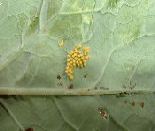
|

|
| Aphids are a serious pest, weakening your growing Broccoli plants and introducing viruses which further weaken plants. Spray with Derris if infestation is serious.
|
Eggs of the Large White butterfly. Caterpillars can defoliate a plant quickly so watch out for them. Inspect the underside of the leaves for clusters and squish them. Practice your tennis strokes when the butterfly is about | Caterpillar of the Small White butterfly. Defoliates plants quickly, watch out for them. Pick off and destroy, use a nematode spray or spray with Derris. Eggs are laid under leaves in a random way, not in clusters, nor are they brightly coloured. |
Club Root is a fungus and all brassicas (thats the family umberalla for Broccoli along with Brussels Sprouts, Cabbage, Kohlrabi, Turnip, Cauliflower) can be affected.
The roots of your young growing Broccoli become stubby and swollen. Leaves become yellow and wilt causing severe stunting of growth. This causes swelling and reduces the flow of water and nutrients to the plant. Spores are produced and can survive in the soil for up to five years.
Prevent club root by practicing crop rotation and take extreme care if you buy in seedlings from outside as this is often the way this fungus is introduced.
Reducing the acidity of the soil by adding lime will help.
Aphids can be a serious pest by weakening your growing Broccoli plants and introducing viruses. Try planting Marigolds or Tagetes plants among the crop. They attract beneficial insects like hover flies and ladybirds which feed on the Aphids and will help reduce the infestation.
Knowing how nature operates helps us understand how to grow Broccoli and other vegetables in a way that helps your environment positively. But spraying is the only way to make a real impact on badly infested plants.
Get advice from your garden center for sprays that can be used - they change so regularly as new legislation takes effect.
Flea Beatles are tiny beetles that can make sieves out of your brassica leaves. When you touch the Broccoli leaves they ping off just like regular fleas, only these won't bite you! To deter them:
- Use horticultural fleece placed over your broccoli, as soon as you transplant them outside; a floating row cover.
- Lightly hoe over the soil regularly to destroy eggs and larvae and expose them to predators.
- Give your plants a mid-day shower with the hose (not in full sun though), as they're most active then and they don't like wet conditions.
- Try 'Companion Planting', to attract the beneficial insects.
Vast changes have taken place in the UK and Europe concerning the availability of pesticides during recent years to the extent that most have been removed from retailers shelves. Visit your garden centre or nursery and seek their advice as what to use.
When your learning how to grow Broccoli, it is important to be able to recognise the pests from the goodies - you don't want to kill the goodies if you can help it. So observation is the way to to become knowledgeable... it all adds to the enjoyment.
Growing Broccoli - Harvesting
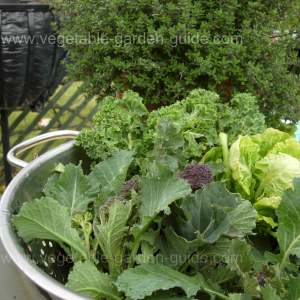
This final step on how to grow Broccoli is always the best step. It means you are about to be rewarded for all your efforts - and the long wait... but it's all been worth it.
The time to cut your first 'spear' or flower shoot is when they are well formed but the tiny flower buds have not yet opened. Letting them flower will render the spear tasteless.
To produce the side shoots which will keep on appearing you first need to cut the main central spear of your growing Broccoli. As these side shoots grow (10-15cm(4-6") long), you will want to pick them regularly. Picking can go on for 6 weeks but if they flower, shoot production will stop very quickly.
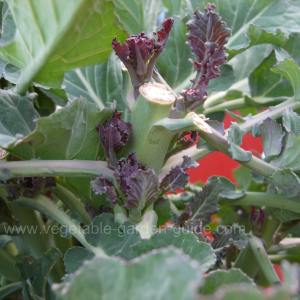
You now know how to grow Broccoli - it's up to you to put it into practice. Remember you don't need to have everything 'just right' because you won't... there are too many variables.
Just follow this guide and get out there and do it - you will absolutely learn from your experiences. Remember remember even the most experienced vegetable growers have failures... and they're honest about it too.
Let me know how you get on and send me a photo and I will publish it on this website.
All the best - and have a great time in your vegetable garden.
Return to Alphabetical List Of Vegetables
